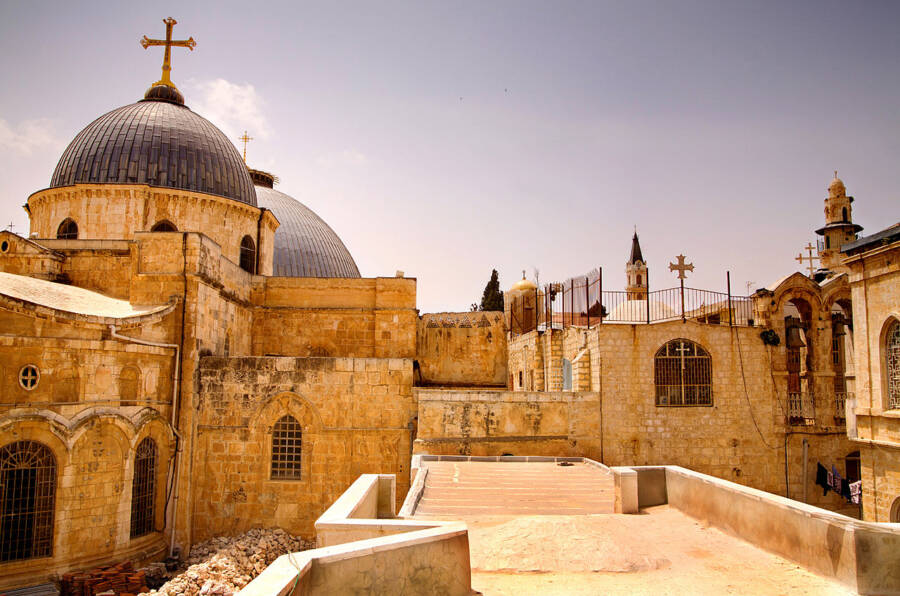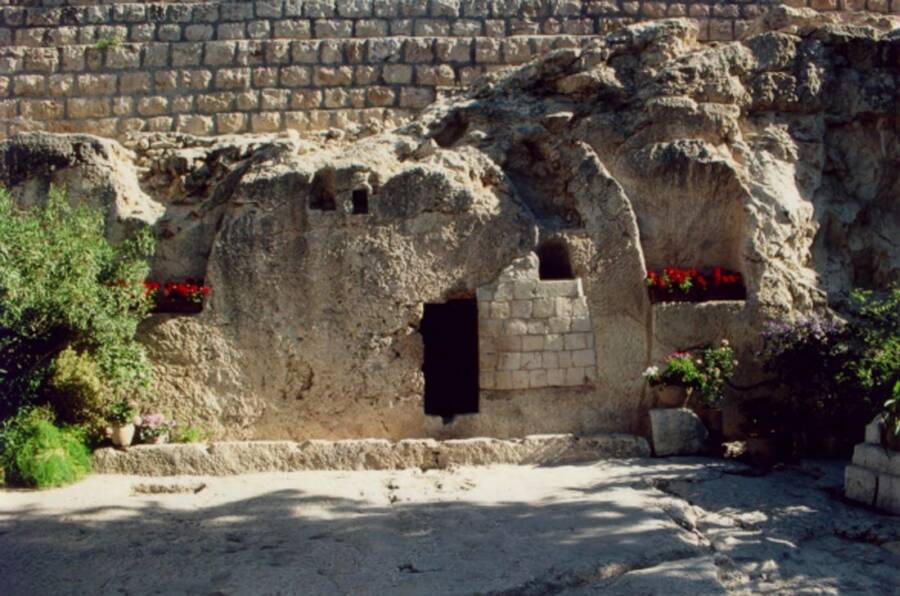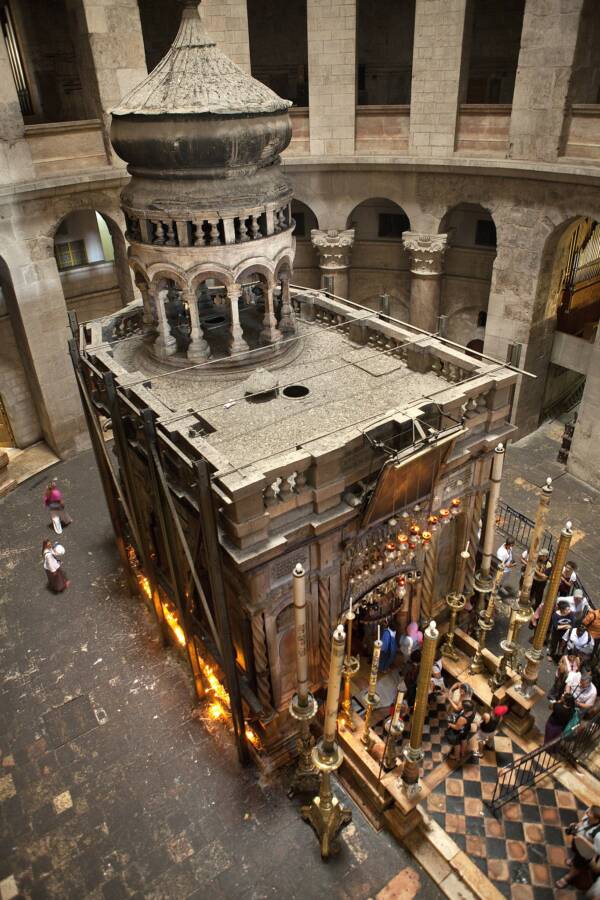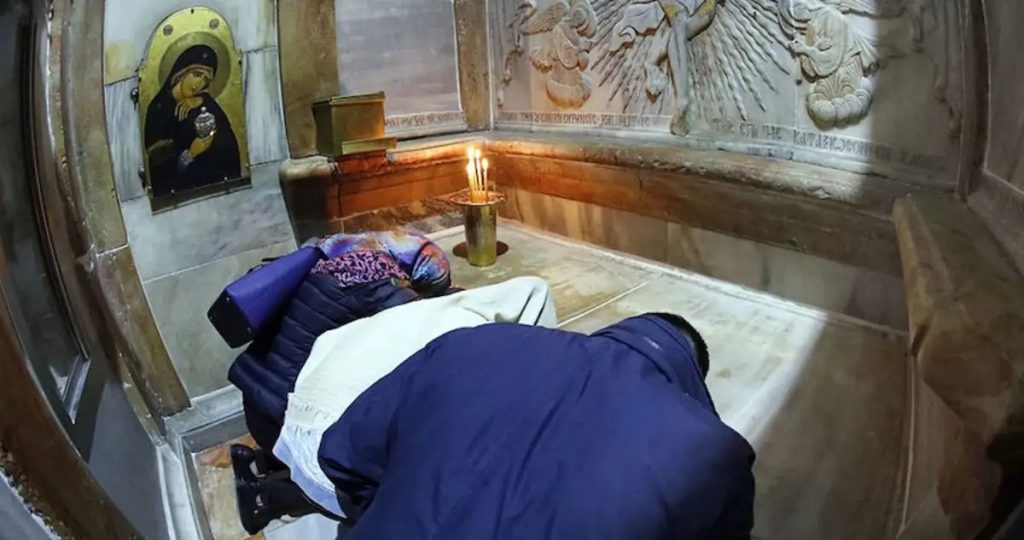The Intriguing Quest for Jesus’ Final Resting Place
The biblical account of Jesus Christ’s crucifixion and subsequent resurrection has captivated scholars and historians for centuries. The question remains: where exactly is the tomb where Jesus was buried? Could it be the Talpiot Tomb, the Garden Tomb, or perhaps in distant lands like Japan or India?
The Leading Contender: Church of the Holy Sepulchre

Most scholars lean towards the Church of the Holy Sepulchre in Jerusalem’s Old City as the probable location of Jesus’ tomb. In a historic event in 2016, the church was unsealed, offering a glimpse into the mystery that has endured for centuries.
Unraveling Centuries-Old Beliefs
The conviction that Jesus’ tomb resides in the Church of the Holy Sepulchre traces back to the fourth century when Emperor Constantine, a recent Christian convert, dispatched his representatives to locate the sacred site. Beneath a 200-year-old Roman temple, they discovered a tomb resembling the biblical description, solidifying their belief in its authenticity.
Challenges to Certainty
Despite widespread acknowledgment, certainty eludes the claim that Jesus Christ was buried in the Church of the Holy Sepulchre. Early Christian persecution and subsequent dispersal from Jerusalem raise doubts about the preservation of the grave. Complicating matters are alternative tombs like the Garden Tomb and the Talpiot Tomb, both carved from rock but lacking the historical weight of the church.
The Garden Tomb: A Rival Claim

Discovered in 1867, the Garden Tomb in Jerusalem stands as a compelling alternative. Archaeologist John McRay acknowledges the absence of absolute proof but emphasizes the strong archaeological and literary evidence linking it to the Church of the Holy Sepulchre.
Church of the Holy Sepulchre’s Turbulent History
The Church of the Holy Sepulchre has weathered centuries of turmoil, enduring sackings, destruction by caliphs, and even burning to the ground. Despite these challenges, it has consistently been rebuilt, reinforcing the belief that it remains the most likely site of Jesus’ tomb.
Unveiling the Tomb: A Historic Moment
In 2016, a unique collaboration between the Greek Orthodox, Armenian Orthodox, and Roman Catholic entities led to the unsealing of the Church of the Holy Sepulchre. Facing structural concerns, the tomb was opened, allowing restorers to undertake essential repairs.
Inside the Sacred Space

A team of specialists meticulously removed marble cladding and a cross-carved slab to access the limestone cave beneath. For 60 hours, they collected samples, took rare photographs, and reinforced the tomb’s structure. Priests, monks, scientists, and workers marveled at the opportunity to witness the interior of Jesus’ tomb.
Awe-Struck Witnesses
Father Isidoros Fakitsas of the Greek Orthodox Patriarchate expressed the profound impact: “We saw where Jesus Christ was laid down.” The experience left others equally awed, emphasizing the historical and religious significance of the moment.
Conclusion: Forever Enshrouded in Mystery
After nine months and a $3 million restoration effort, the tomb was resealed, leaving a small window for pilgrims to glimpse the limestone rock beneath. Yet, whether they truly peer into the tomb of Jesus remains an enduring mystery.



